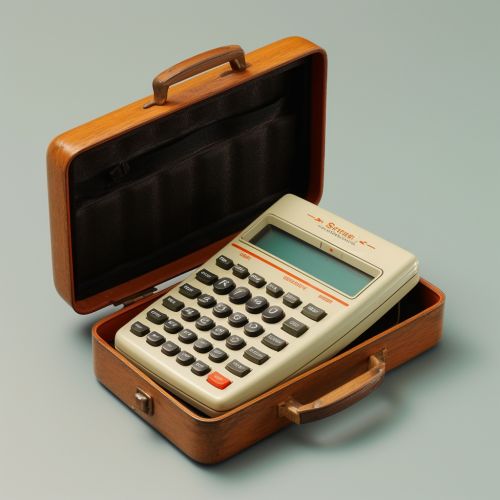Portable calculator
History
The history of the portable calculator is a fascinating journey that began in the early 1960s. The first handheld calculators were created by companies like Texas Instruments and Hewlett-Packard, who were pioneers in the field of electronics and computing. These early models were large and expensive, but they paved the way for the compact, affordable devices we know today.


Design and Functionality
The design of portable calculators has evolved significantly over the years. Early models were large and bulky, with a limited number of functions. However, advancements in technology have led to the development of compact, lightweight calculators that can perform a wide range of mathematical operations. These devices typically feature a numerical keypad, a small display screen, and buttons for various functions such as addition, subtraction, multiplication, and division. Some models also include advanced features such as scientific notation, statistical calculations, and programmability.
Types of Portable Calculators
There are several types of portable calculators, each designed for specific uses. These include:
- Scientific Calculators: These calculators are designed for advanced mathematical operations and are commonly used in fields such as engineering and physics. They can perform functions such as trigonometric calculations, logarithms, and complex number operations.
- Graphing Calculators: These calculators are capable of plotting graphs and solving equations. They are often used in higher-level mathematics and science courses.
- Financial Calculators: These calculators are designed for financial calculations such as interest rates, loan payments, and investment returns.
- Basic Calculators: These calculators are designed for simple arithmetic operations and are commonly used in schools and offices.
Technological Advances
Technological advances have played a significant role in the evolution of portable calculators. The introduction of liquid-crystal displays (LCDs) in the 1970s allowed for clearer, more energy-efficient screens. The development of microprocessors and integrated circuits led to smaller, more powerful calculators. Today, many calculators are solar-powered, eliminating the need for batteries.
Impact on Society
The portable calculator has had a profound impact on society. It has revolutionized the way we perform mathematical calculations, making complex computations accessible to everyone. It has also played a crucial role in the fields of science, engineering, and finance, enabling professionals to perform complex calculations quickly and accurately.
Future Developments
The future of portable calculators is likely to be shaped by advancements in technology. With the rise of smartphones and tablets, many people now use digital calculator apps instead of physical devices. However, dedicated calculators continue to be used in education and professional settings due to their specialized functions and ease of use.
